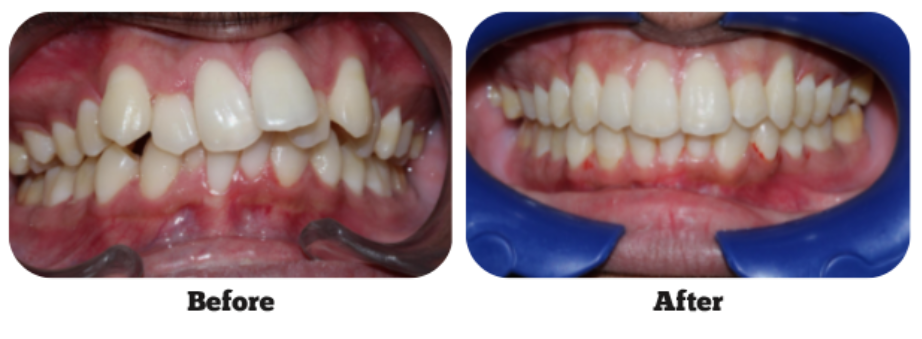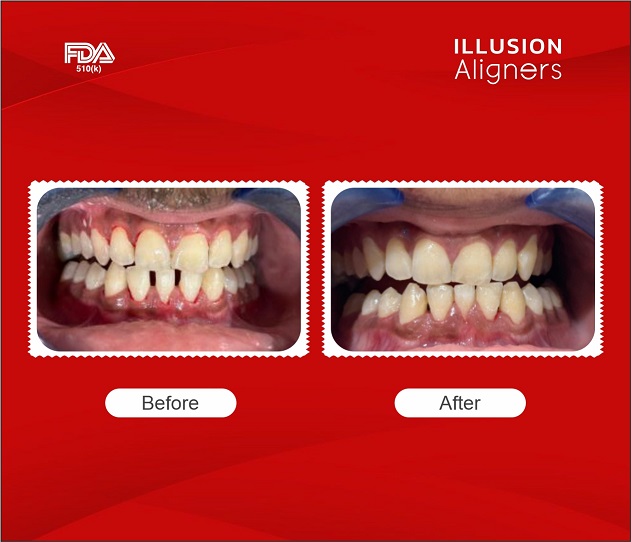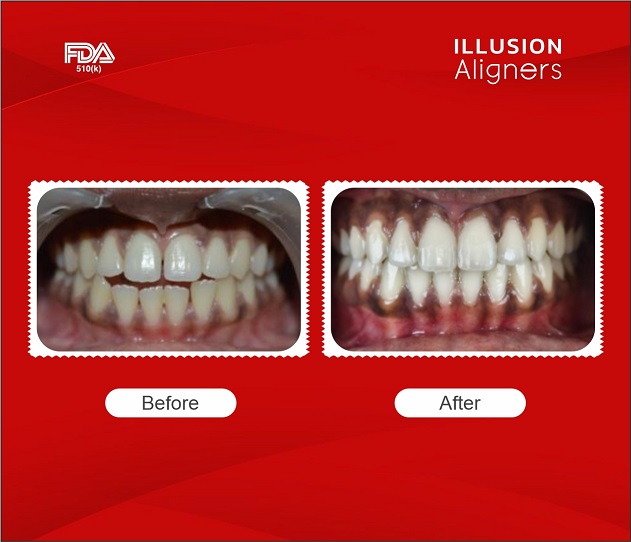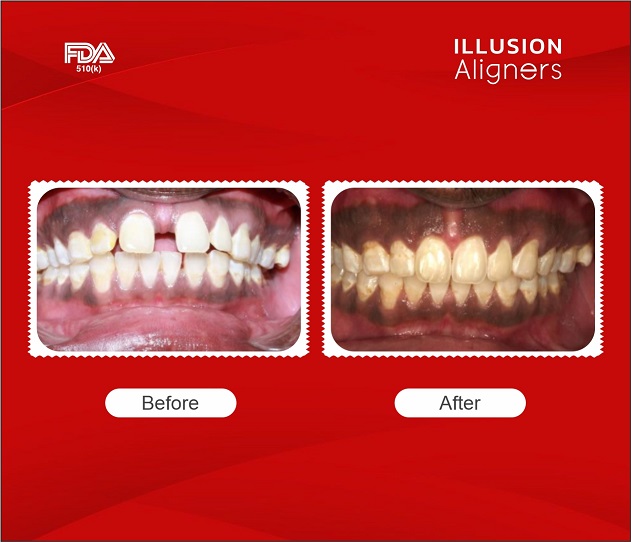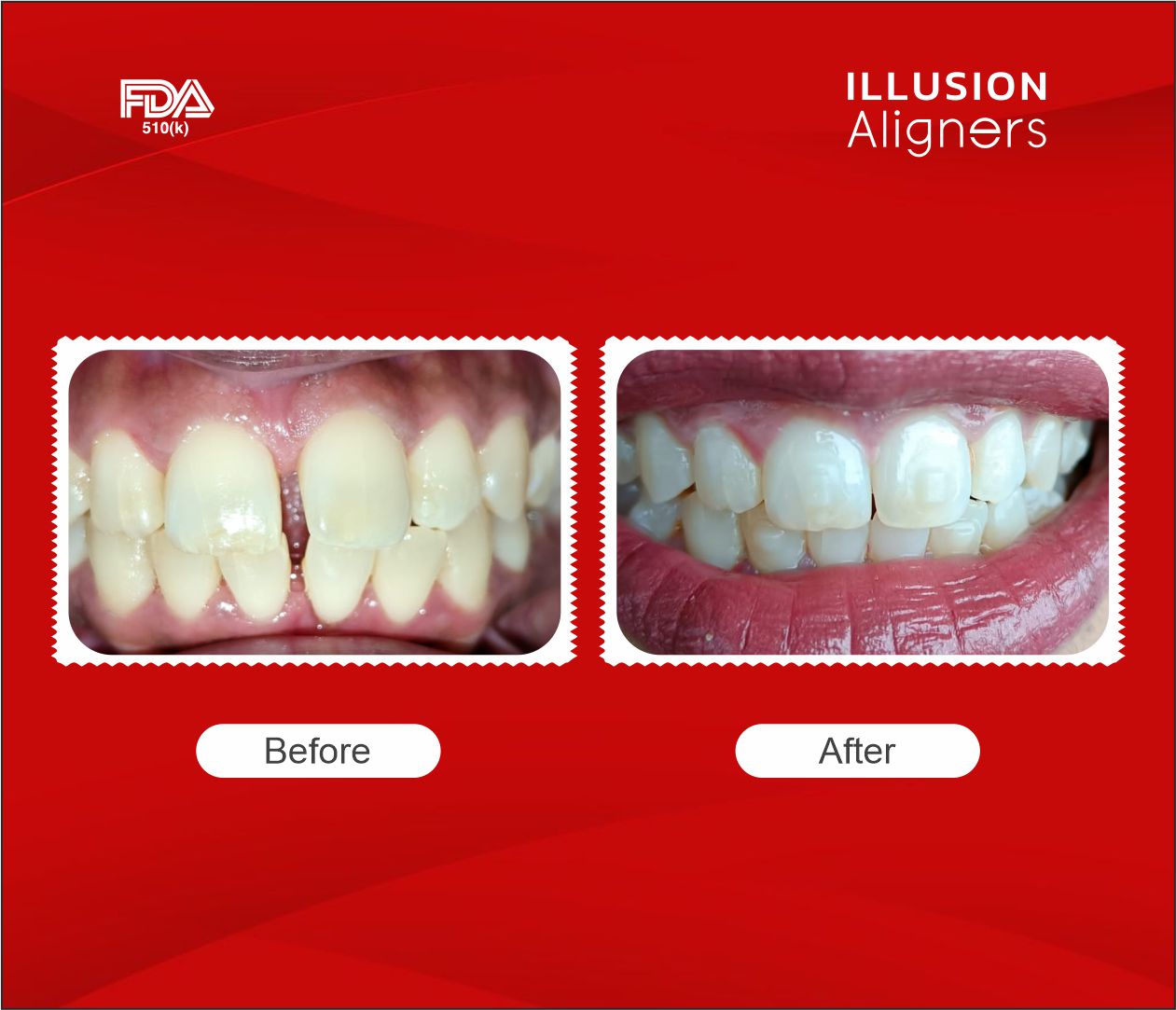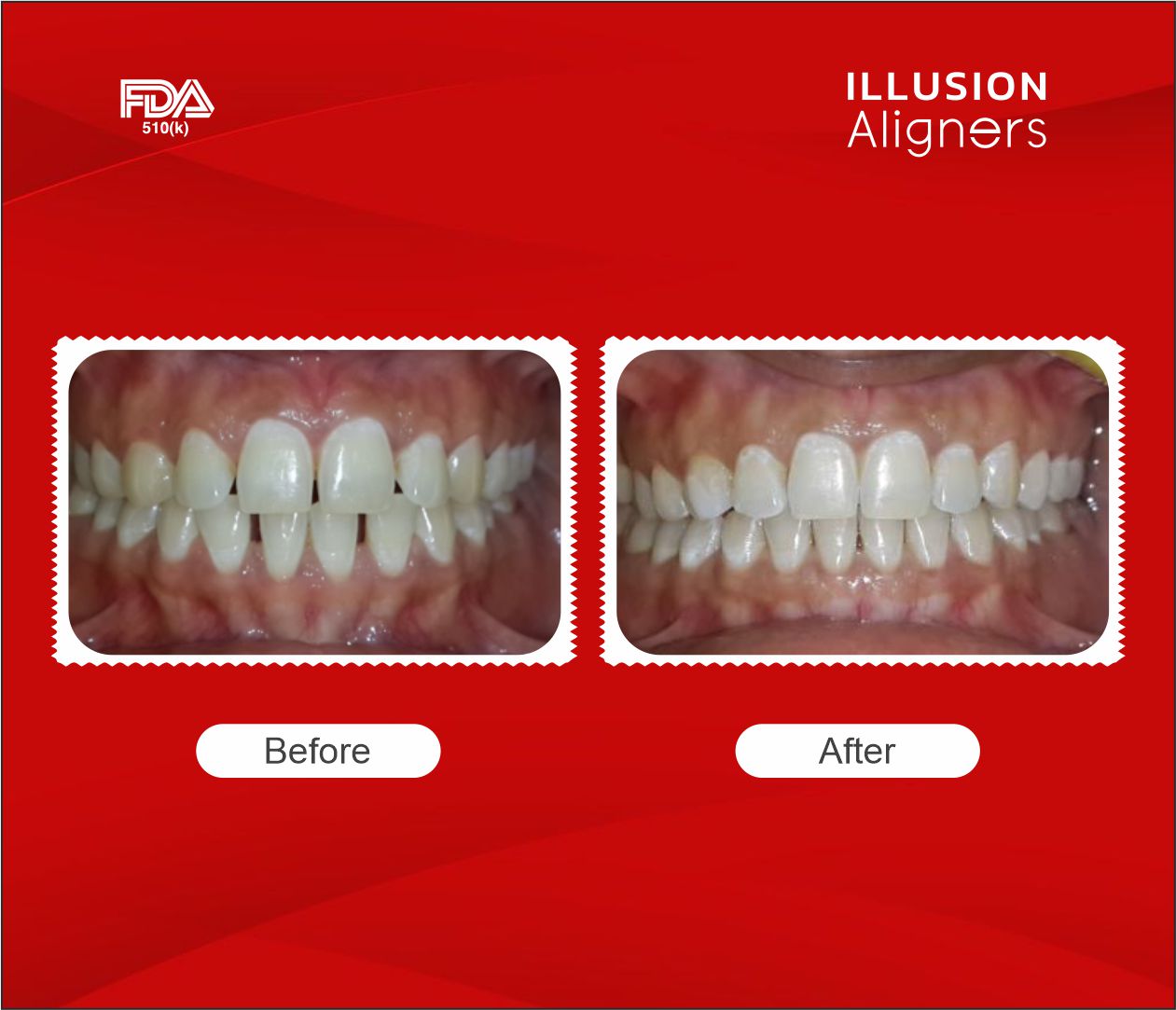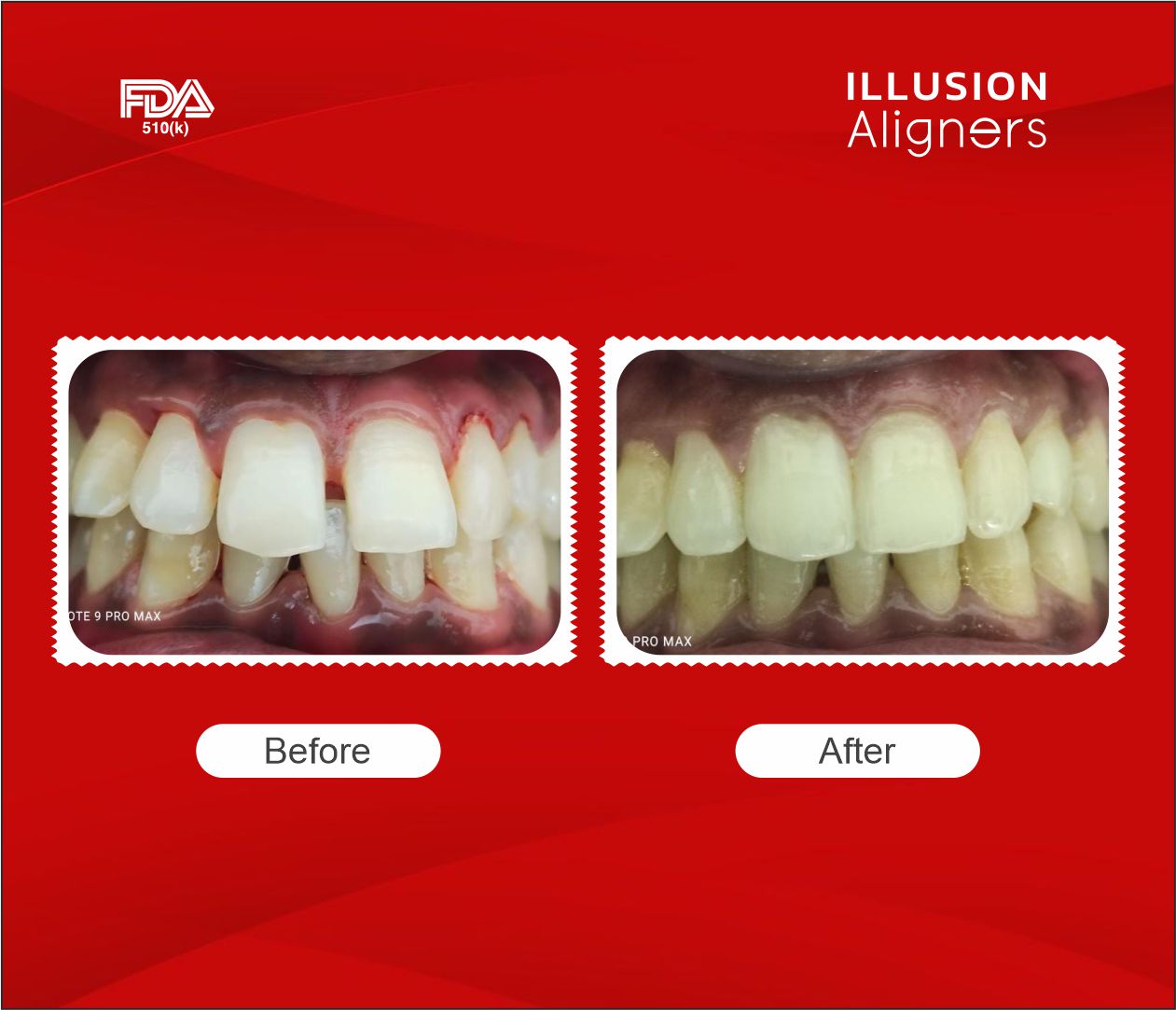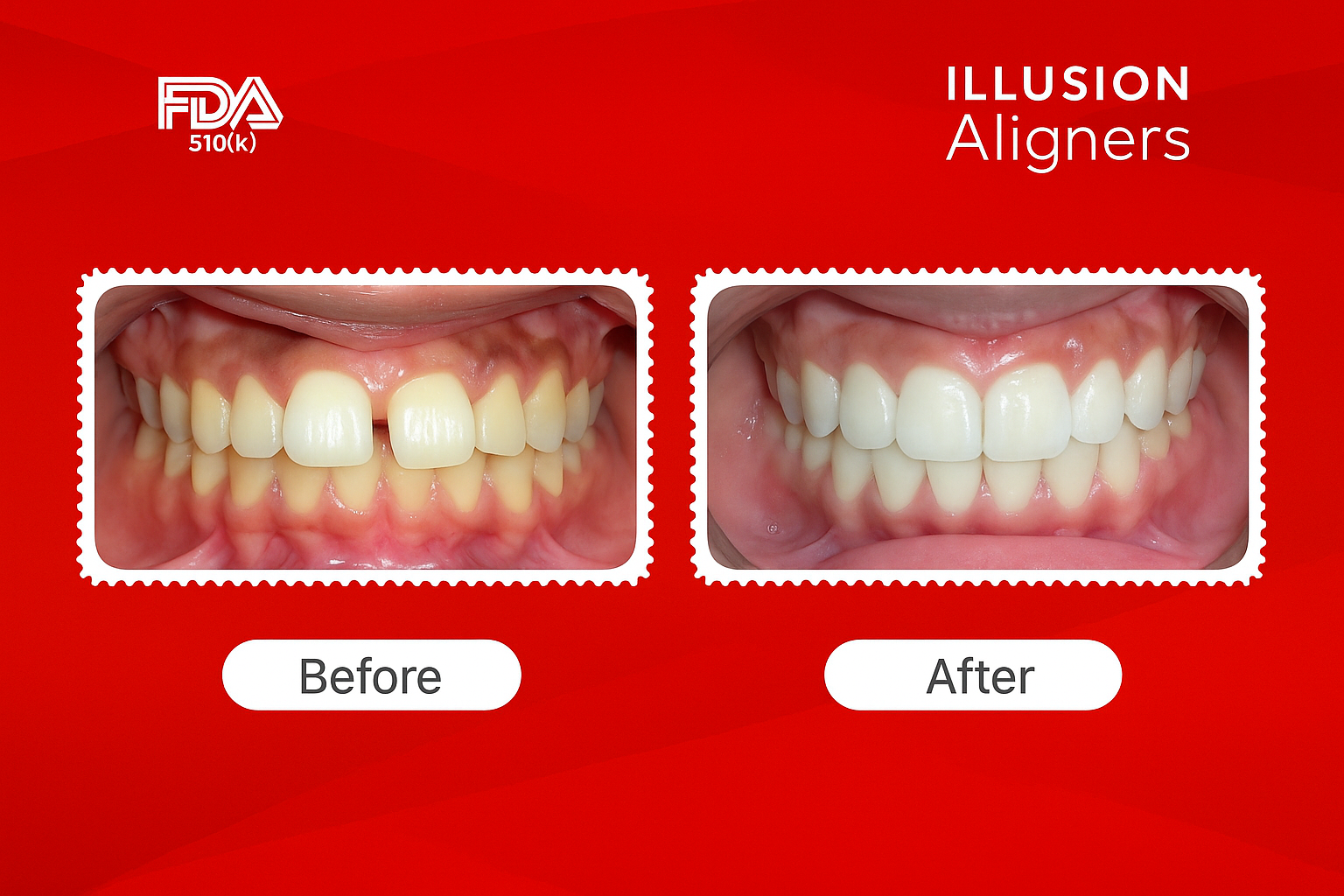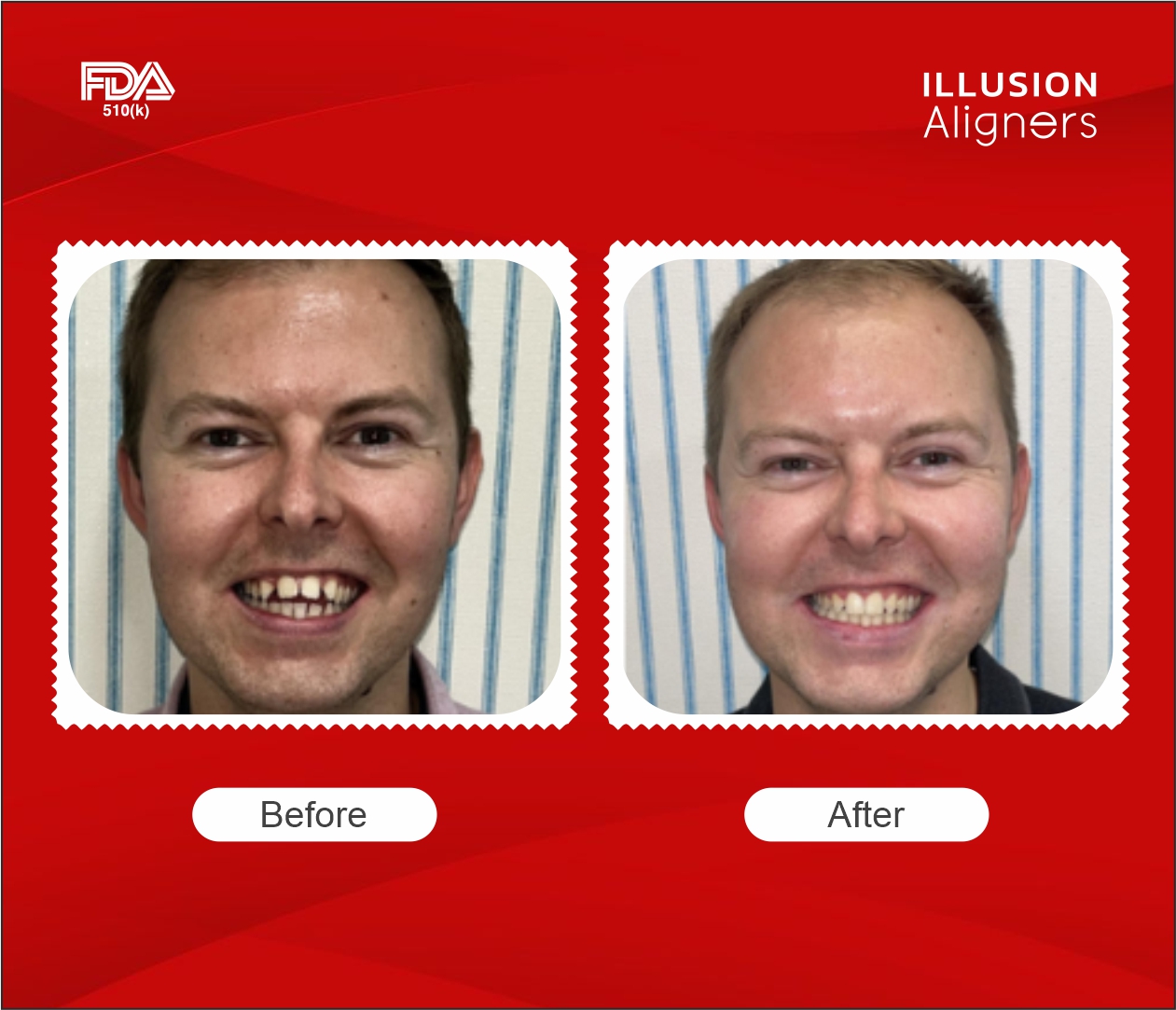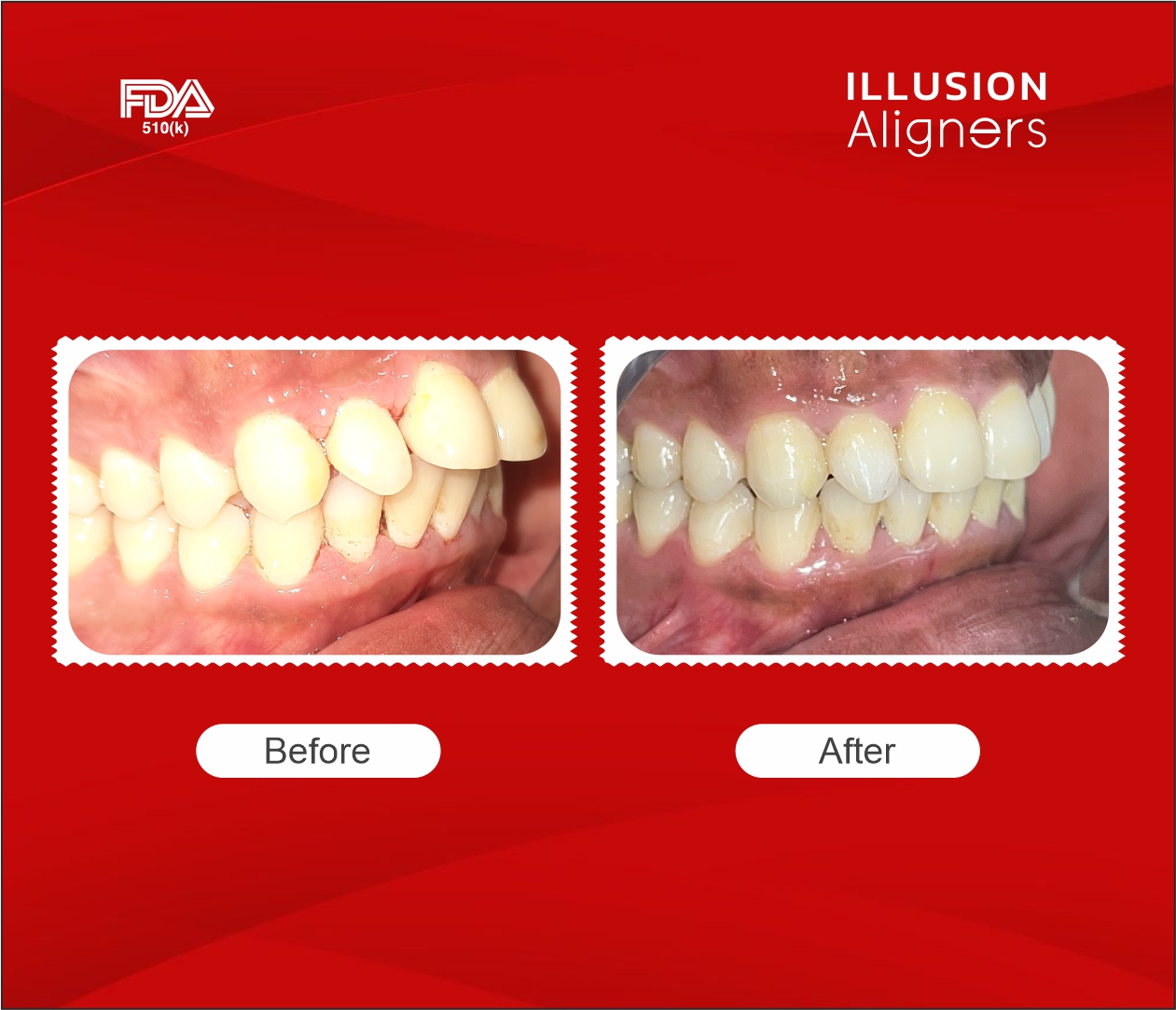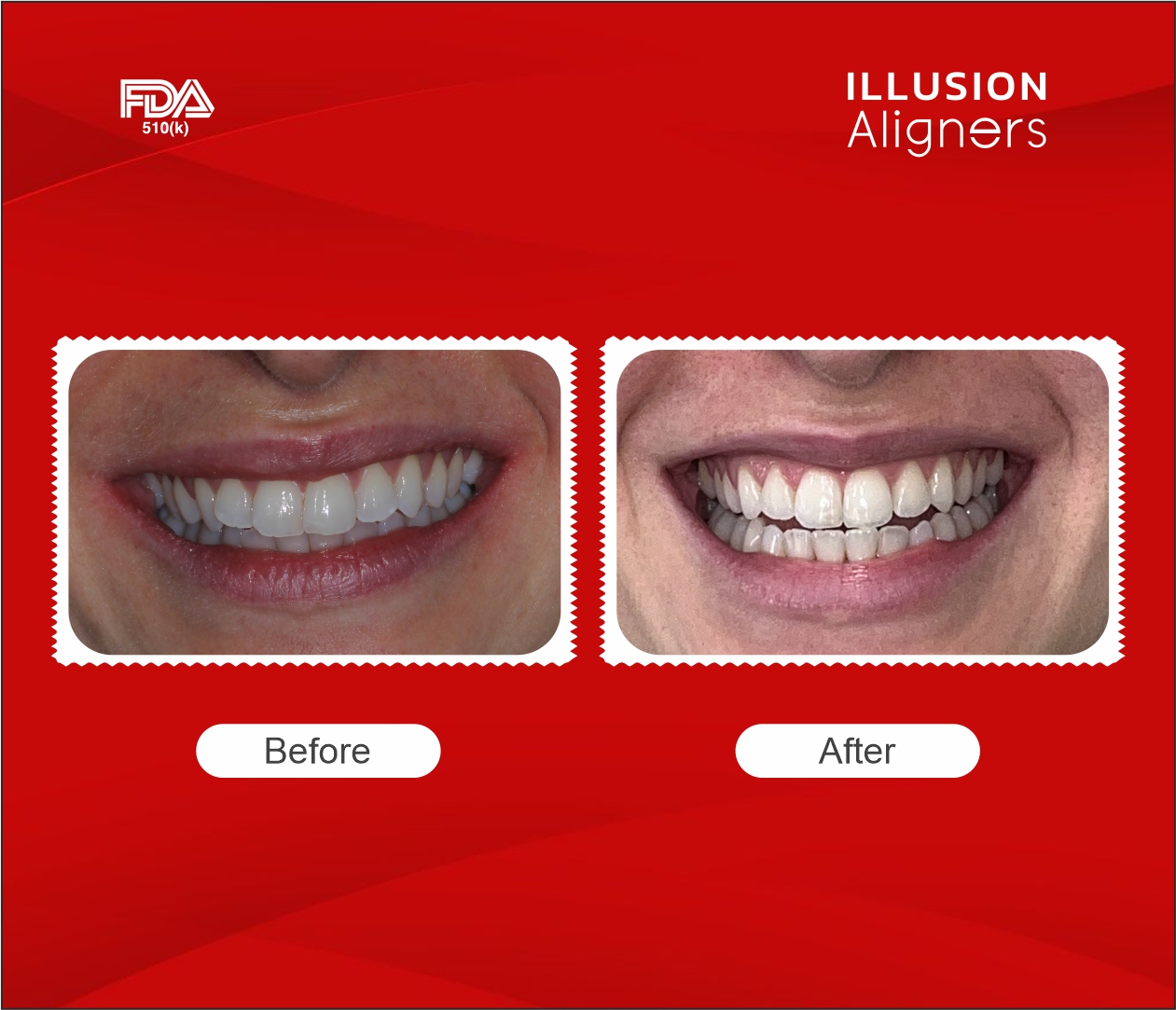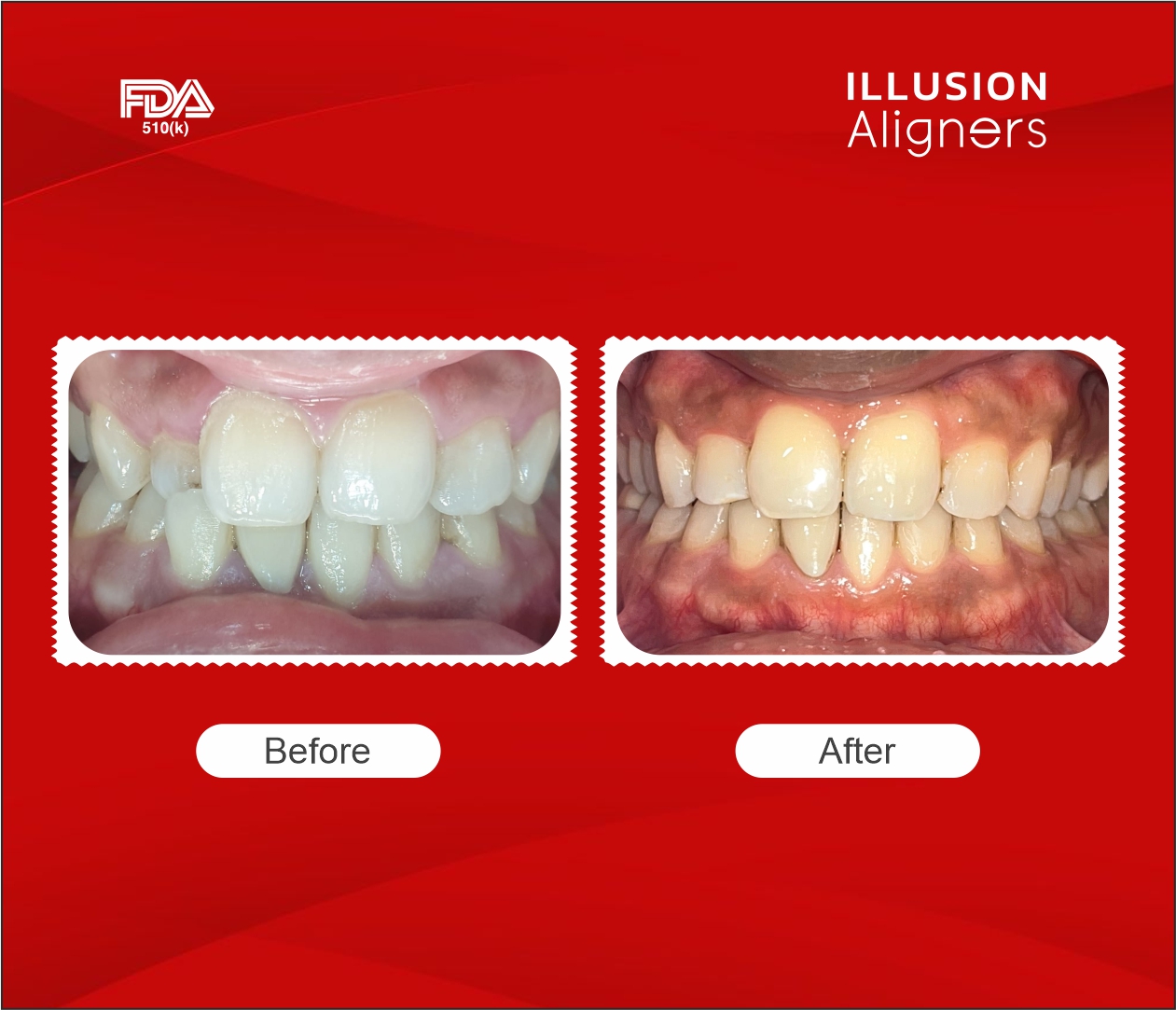
Publish on Jul 30, 2025
Orthodontic Treatment: A Non-Extraction Approach for Smile Alignment
#SuccessStory – Om (22 / M)
INTRODUCTION:
Non-Invasive Orthodontic Protocol: This methodology emphasizes leveraging arch development to create space, thus eliminating the need for tooth extractions. A carefully crafted treatment plan, precision aligner therapy, and attention to detail are essential in achieving outstanding results.
ABOUT THE CASE:
This case study involves a 22-year-old young adult male, who presented with severe dental crowding with multiple locked teeth. The primary concern was the aesthetic and functional issues related to overlapping teeth, difficulty in chewing, and improper smile.
Pre-Treatment:

DIAGNOSIS:
A comprehensive examination revealed Angle's Class 2 Division 1 malocclusion with severe crowding in both arches and locked teeth, particularly in the upper and lower anterior regions.
TREATMENT PLANNING:
The treatment plan was designed to address the severe crowding and malocclusion without extraction, which would involve a combination of arch development, space creation, and alignment.
Upper Arch:
- Expansion in the canine and premolar regions to open space for the anterior teeth
- Correct misalignment of the upper incisors to achieve a symmetrical smile
Lower Arch:
- Similar expansion in the canine-premolar region to accommodate the crowded lower anterior teeth
- Correct the canine positions and improve overbite and overjet symmetry
TREATMENT APPROACH:
The initial phase of treatment involved initiating arch expansion, thereby creating space for the crowded anterior teeth, particularly in the canine and premolar regions. To achieve this, aligners were carefully sequenced to shift teeth gradually and predictably. In the middle phase, sequential de-crowding was implemented by strategically moving teeth in both the upper and lower arches. This critical stage required frequent monitoring and precise adjustments to ensure proper teeth alignment, setting the stage for optimal treatment outcomes.
REFINEMENT PHASE:
After the initial phase of aligner therapy, two refinement phases were necessary. The first one focused on adjusting the upper arch with 15 aligners and the lower arch with 5. This phase addressed midline discrepancies and final alignment of the front teeth. The second phase involved 5 more aligners for both the upper and lower arches to ensure the occlusion was perfect and that the upper and lower teeth aligned symmetrically.
Post-Treatment

TREATMENT RESULTS:
Following treatment, significant de-crowding was achieved in both the upper and lower arches, with previously locked teeth now well-aligned in their correct positions. A symmetric overbite and overjet were successfully obtained, resulting in a functional bite that enabled improved chewing. Additionally, the midline was corrected, yielding a balanced and symmetrical smile. The patient's smile aesthetic was also greatly enhanced, with the previously overlapping front teeth now resolved, and the overall smile appearing more natural and pleasing.
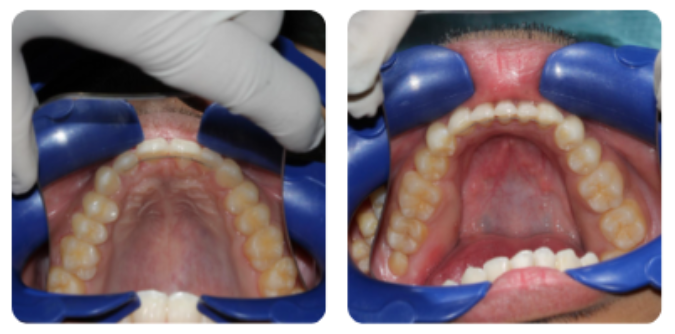
RETENTION PHASE:
To maintain the results achieved through aligner therapy, fixed retainers were placed on both the upper and lower arches. Clear Essix retainers were provided to be worn at night, ensuring long-term retention of the results.
CONCLUSION:
The treatment of severe crowding case using non-extraction clear aligners was a success. Over the course of 22 months, noted improvements were made in both the functional and aesthetic aspects of his smile. The use of Illusion Aligners allowed for a gradual, controlled movement of the teeth, preserving natural tooth structure and achieving optimal results.
The patient is now in the retention phase and continues to maintain the results with fixed and Essix retainers, ensuring long-term stability and preserving the beautiful smile achieved during treatment.
